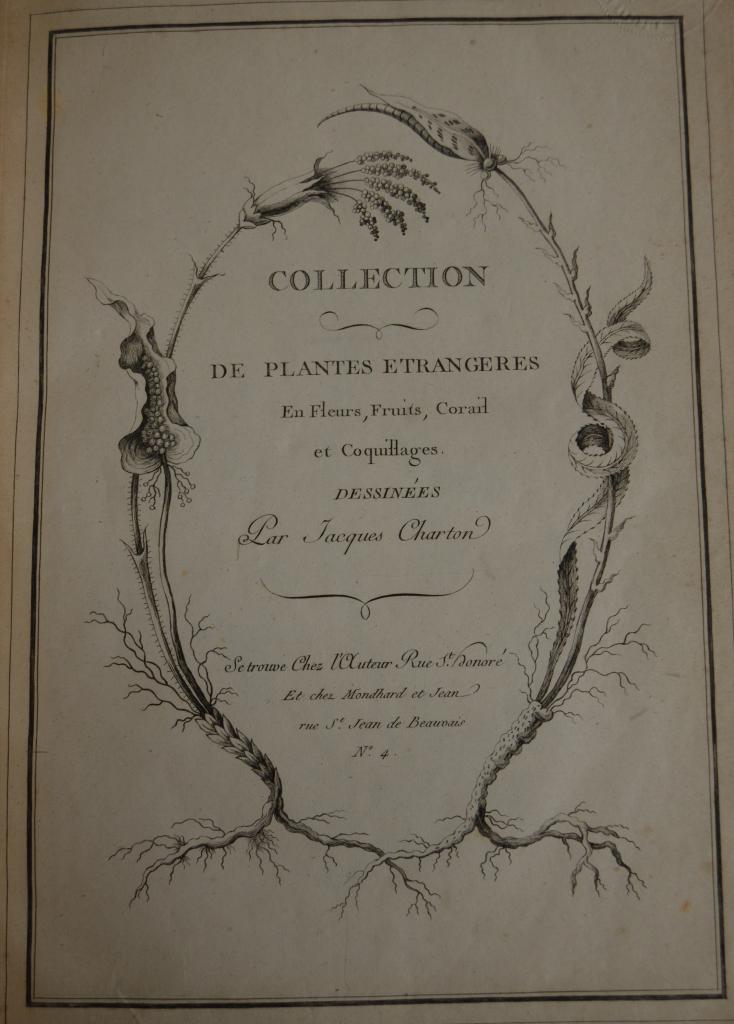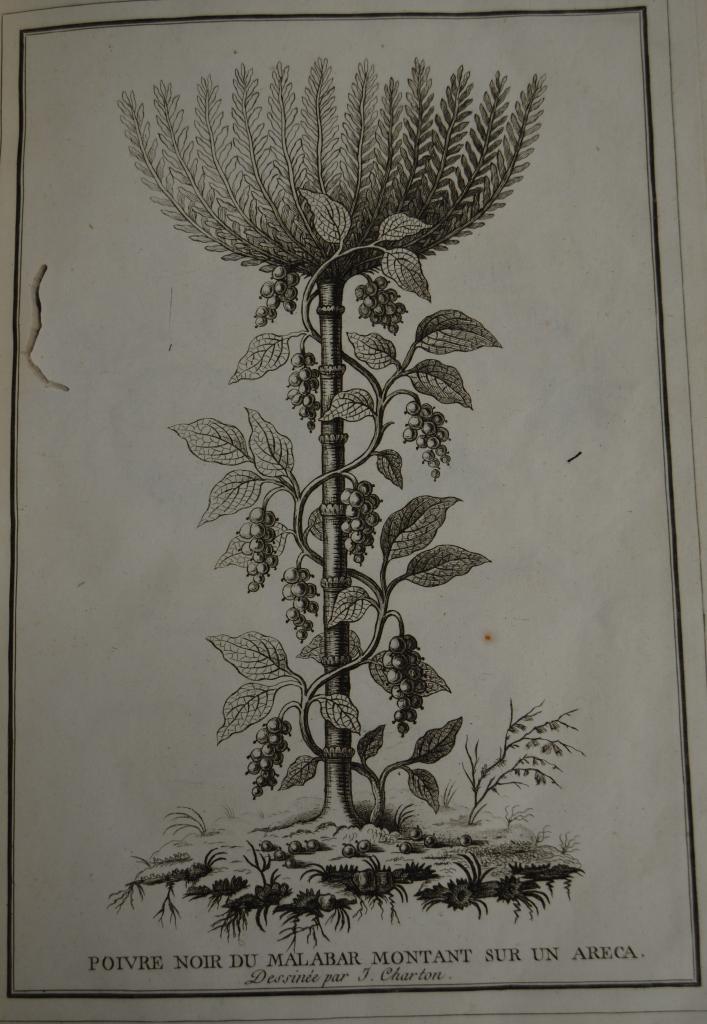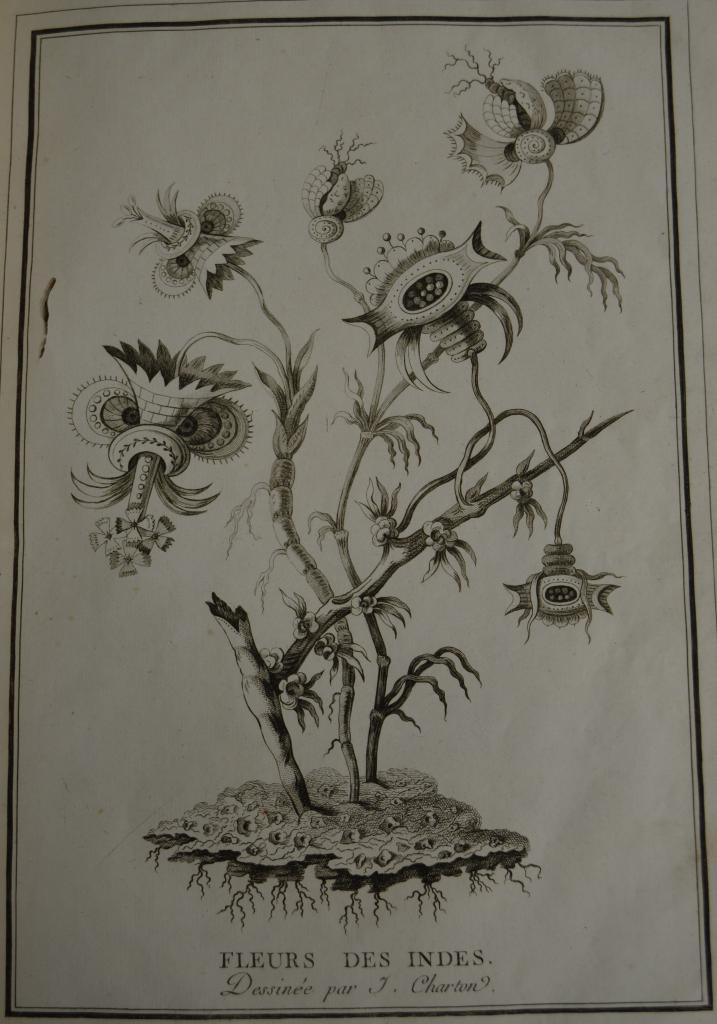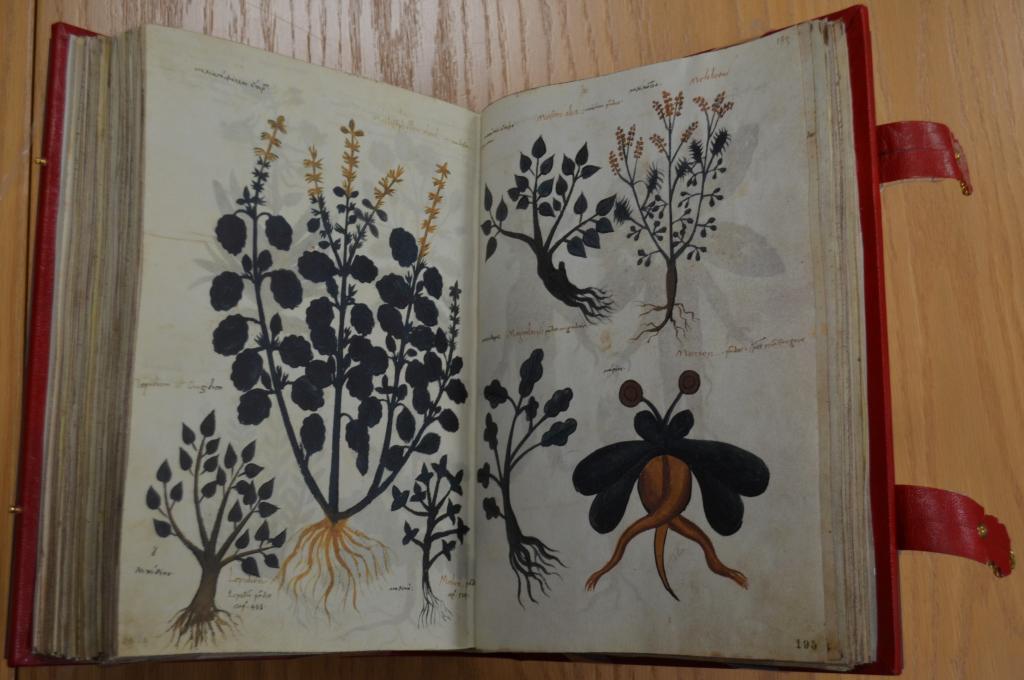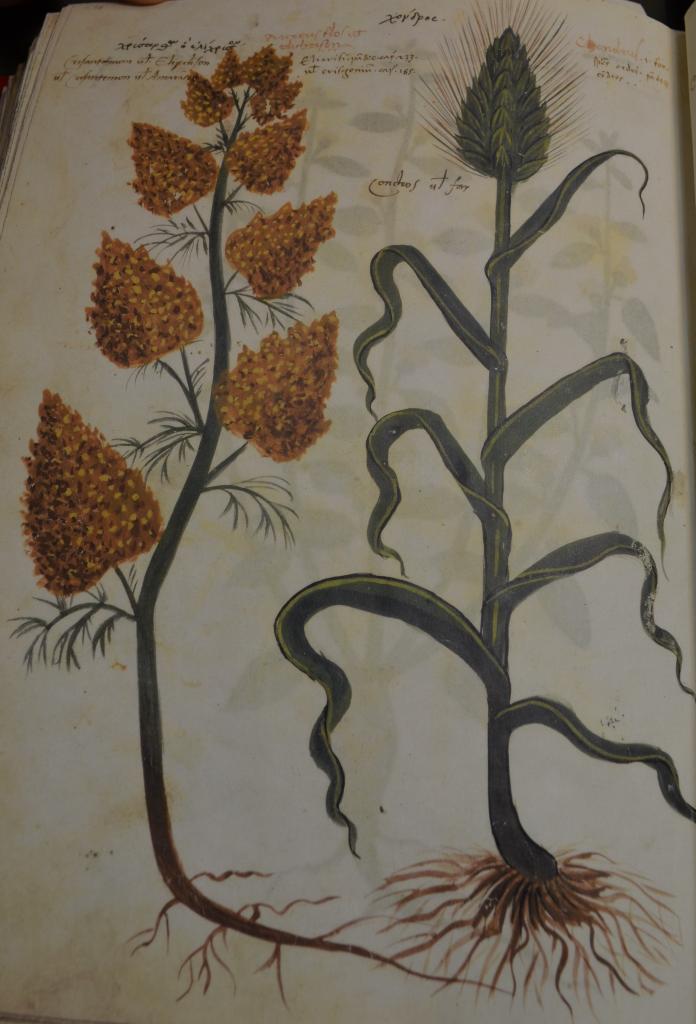Fantastic Illustrations and Artwork
Botanical artists and illustrators are no different from others in that they may take ‘artistic license’ with their subjects as they see fit. No truer depiction of this is displayed than between Charton’s Collection de Plantes Étrangères: En Fleurs, Fruits, Corails et Coquillages and Dioscurides Graeco-Latinus: Vat. Chigi F. VII. 159. The contradiction of the fantastic of Plantes Étrangères and the accuracy of Dioscurides Graeco-Latinus reveals how artists can take the same subject but portray it differently to an audience to achieve their goal of plant description.
Charton illustrated plants that were strange, or foreign, to France. He enlarged the size of the plants to increase the detail, and in the background added smaller depictions of animals, people and natural environment images to add context to the plant’s natural surroundings or uses.
The Dioscurides Graeco-Latinus: Vat. Chigi F. VII. provides straightforward plant and flower illustrations of the flower, stems, seeds, fruits and roots. This botanical pharmacopeia identified medicinal plants which were “… universally used in the Greek, Roman and Arab worlds from the second century AD until modern times and known as a Dioscorides, after Pedacius Dioscorides Anazarbeus, a Greek doctor in the service of the Roman legions. In his De Materia Medica, he listed 600 plants, 90 minerals and 30 animal products, with a drawing of each one and a note of its therapeutic properties.” The facsimile here is a 1999 reproduction of the original work located in the Vatican Library, originally owned by Cardinal Fabio Chigi, who took the name of Alexander VII on his election as Pope (1655–1667).


